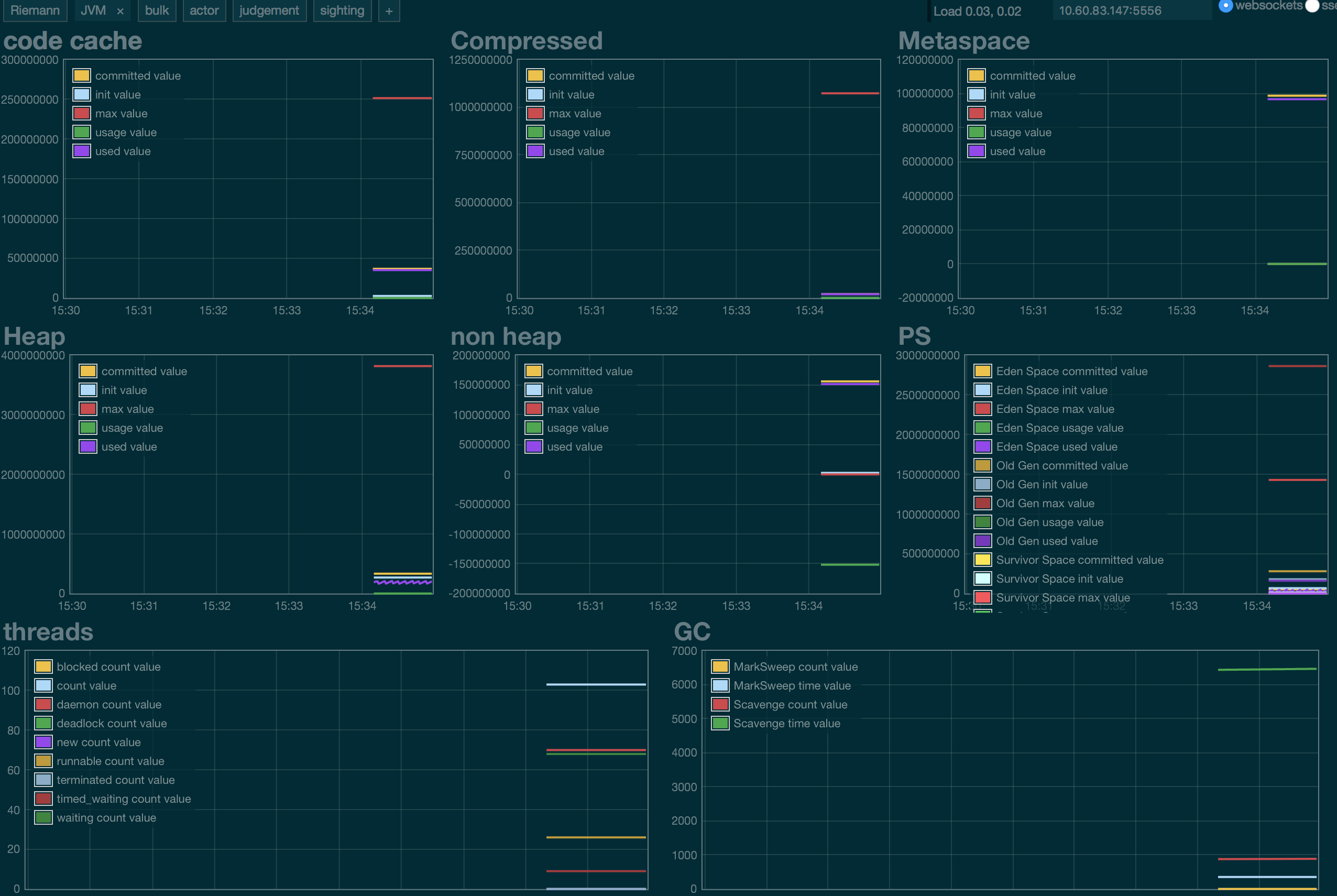| bin | ||
| example | ||
| img | ||
| lib/riemann | ||
| sh | ||
| test | ||
| .gitignore | ||
| Gemfile | ||
| Gemfile.lock | ||
| LICENSE | ||
| Rakefile.rb | ||
| randomize-ids.sh | ||
| README.markdown | ||
| riemann-dash.gemspec | ||
Riemann-Dash
Remark: the riemann config is the file riemann.config.
It contains alert rules.
Riemann-Dash is a javascript, websockets-powered dashboard for Riemann.
Get started
$ gem install riemann-dash
$ riemann-dash
Then open http://localhost:4567 in a browser. Riemann-dash will connect to the local host (relative to your browser) by default, and show you a small manual. Change the IP address in the top right field to point to your Riemann server's websocket port.
Configuring
Riemann-dash takes an optional config file, which you can specify as the first command-line argument. If none is given, it looks for a file in the local directory: config.rb. That file can override any configuration options on the Dash class, and hence, all Sinatra configuration. You'll find a few usage examples in "example/config.rb".
set :port, 6000 # HTTP server on port 6000
set :bind, "1.2.3.4" # Bind to a different interface
config[:ws_config] = 'custom/config.json' # Specify custom workspace config
Putting in production
If you expect more than a couple of simultaneous users, you should consider running Riemann-dash in a proper application server. The easiest way is to install thin or puma. Riemann-dash will automatically use one of them if they are present. You'll need the C/C++ compiler, as well as the ruby and openssl libraries and headers installed.
$ gem install riemann-dash thin
$ riemann-dash
Riemann-dash can also run in a web server supporting the Rack interface. An example rackup app is found in "example/config.ru".
Development
$ git clone git://github.com/aphyr/riemann-dash.git
$ cd riemann-dash
$ bundle
Testing
# run tests
$ sh/test
Releasing
$ rake build
$ rake release
REPL
$ sh/c
> irb :001 > Riemann::Dash::VERSION
> => "0.2.2"
